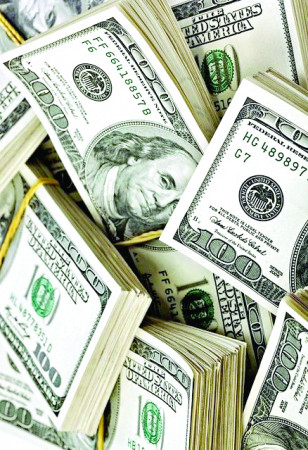What D-dollarization means for US hegemony

The ubiquitous United States (US) dollar has been the default currency of exchange for both international trade and business for decades. The currency has captured the imagination of both the old and the young, and is surrounded by all manner of myths about its glory and indomitability.
But the dollar has not been almighty for as long as one would imagine. The United Kingdom’s (UK) sterling pound ruled much of the global economy from the 19th century up to mid-20th century. Unfortunately, the sterling pound was ruined after the UK almost became bankrupt following the country’s indulgence in the two world wars. The dollar stepped into the vacuum as the world’s reserve currency following the Bretton Woods Agreement of July, 1944 that established the International Monetary Fund and what became the World Bank Group.
But the dollar could go the way of its predecessors in the near future. The first salvo against the green buck was shot by Russia President Vladimir Putin in March 2022 when he demanded that “unfriendly” countries buy Russian oil and gas using rubles, his country’s currency. This was in retaliation of U.S.-led Western sanctions as a result of the now one-year old Russia-Ukraine war.
Saudi Arabia and China have lately come to a common understanding and are committed to gradually making the shift from the dollar. Speaking at a Chinese-Arab summit hosted by Saudi Arabia in mid-January, China’s President Xi Jinping’s affirmed that his country would purchase fuel in Yuan instead of the U.S. dollar in trade exchanges with members of the Gulf Cooperation Council.
In what economic experts see as a snowballing effect, the increasing influential developing-country group consisting Brazil, Russia, India, China and South Africa (BRICS) are also actively seeking an alternative to the dollar-based payments platform. The initiative dates back to 2014 when BRICS formed the New Development Bank for this purpose. Still in January, Brazil and Argentina talked of establishing a common currency for bi-lateral trade in order to reduce reliance on the dollar.
What one can be sure is that US economists and other policy makers in the country are already on the drawing book drawing worst case scenarios and visualising the ramifications of an internationally irrelevant dollar.
The superpower’s allies are also trying to engage in propaganda that shows the futility or impossibility of moving away from the dollar. For instance, an article published on January 24 by Alexander Busch on DW claimed that Argentina and Brazil had “put common currency plan on ice”. According to the writer, the five-decade plan had “produced little more than material for academic papers.”
It is easy to see the blatant bias and even palpable prejudice in the ongoing efforts towards de-dollarization. The fall of the dollar would be followed swiftly by the demise of the overrated Euro, bringing the Western economic hegemony to its knees.
If the dollar crashes, U.S. companies would struggle to repay their debts. This could translate to less demand for U.S. goods and services, losses that could be felt on the bottom line and stock markets. Unlike 1929 when the US survived the Wall Street crash, the restive money markets could lead to a fatal capital flight to other international money and stock markets.
The probability that the Chinese currency, the Renminbi could replace the dollar is even more disconcerting to the West. Figures released by the United Nations Conference on Trade and Development show that in 2020, China had the largest share of global exports of goods at 14.7 percent, with the U.S. in the second position at 8.1 percent. As the U.S. prices the dollar out of the market, the fairly priced RMB will become attractive to many of the country’s trading partners due to its value for money compared to other major international currencies. —The writer is a PhD student in International Relations












